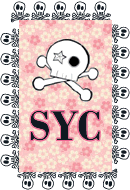How to paint a scene
Use this “formula” to create layouts for memories that have no (or few) photos. Use journaling to “paint” the picture, instead of the camera! You can also use these tips to create layouts on roles not included in the chapters that follow, a sort of “build-your-own-role” section.
| The setting of the event is your canvas. |
Where does your story take place? Your home? A restaurant? Your school? What does the room or the landscape look like? Describe the furnishings, decorations, or any landmarks.
| Use your senses! |
What do you hear in this place?
What do you see? Turn around 360º, and describe what is behind you, to the side, above you, and below you.
What do you taste?
What do you feel? Is it warm or cool in this place? Is anything slick, hard, soft, fuzzy? Do you associate any fabrics with this place or event?
Who is with you? What is their relationship to you? Who is not there? Are there any strangers around you? Describe their clothing, speech, and mannerisms.
| Any good story has a plot. |
| What action is taking place? | |
| What’s the background of the story? Why are these people gathered together? How often do they get together? | |
| What’s the most exciting thing that happened on this occasion? What’s the “climax” of the story? | |
| What happened afterward? |
| Bring it on home! (Offer insight gained by hindsight) |
| What was the best thing about that time/event/place? What didn’t you like? | |
| What did you admire about the people involved? | |
| What did you learn by participating? | |
| How did it affect you, and make you the person you are today? |
Responses to all these questions will paint a vivid picture of your memories. If you don’t have photos, your journaling can help someone visualize what it was like to be there, even if they don’t have the visual “cues” to help them. Without photos (or with very few photos), you’ll have to take a cue from the memory itself for ideas on how to decorate your page. Personally, I’m a big fan of simply matting the journaling on cardstock, placing that on a patterned background, and calling it done! But, if you would like to add a little more “visual interest”, you can find various decorative elements to help illustrate the main theme of the story. You can use die cuts or paper-piecing patterns to give the basic idea of what the story is about.
We often create layouts based on fabulous pictures that make us smile. The photos make the entire layout. But sometimes the photos just aren’t there; sometimes we have just the memories. I strongly encourage you to make pages about those precious memories anyway. The stories are all there, just waiting for you to paint the picture.














0 comments:
Post a Comment